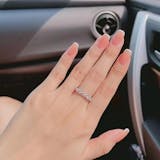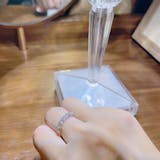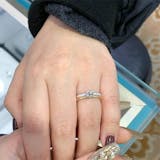SELECTING AND MEASURING LAB-GROWN DIAMONDS
Share

When it comes to crafting exquisite jewelry, every detail matters—especially the diamonds. At NOZBO JEWELRY, we take immense pride in ensuring that every lab-grown diamond we use meets the highest standards of quality, brilliance, and consistency. Unlike natural diamonds, which vary widely in clarity and color, lab-grown diamonds offer greater control over their characteristics. However, this doesn’t mean we compromise on scrutiny. In fact, selecting and measuring each diamond is a rigorous process that demands precision, expertise, and an unwavering commitment to perfection.
Why Lab-Grown Diamonds?
Before diving into our selection process, it’s important to understand why lab-grown diamonds are an excellent choice. These diamonds are chemically, physically, and optically identical to mined diamonds but are created in controlled environments using advanced technological processes like High Pressure High Temperature (HPHT) or Chemical Vapor Deposition (CVD). This allows for:
Exceptional clarity (VS and above)
Near-colorless to colorless grades (DEF range)
Ethical and sustainable sourcing
Greater affordability without sacrificing quality

However, not all lab-grown diamonds are equal. Just like natural diamonds, they must be carefully evaluated to ensure they meet our exacting standards.
Step 1: Sieving – Sorting by Size and Shape
The first step in our diamond selection process is sieving. Since consistency is key in jewelry design, we use specialized mesh screens or automated sieving tools to separate diamonds based on their size and shape. This ensures that every diamond in a piece—whether it’s a solitaire ring or a pavé setting—matches seamlessly with its neighbors.
Round Brilliant Cut: Must have uniform diameter for symmetrical arrangements.
Fancy Shapes (Princess, Cushion, Oval, etc.): Require precise length-to-width ratios.
Melee Diamonds (Small Accent Stones): Often used in halos or bands, these must be nearly identical in size.
Even a fraction of a millimeter can affect the final appearance, so this step is crucial for achieving flawless harmony in jewelry design.


Step 2: Measuring – Precision at the Microscopic Level
Once diamonds are sorted, we move on to measuring—a process where accuracy is non-negotiable. Using digital calipers we record:
Diameter (for round stones)
Length × Width (for fancy shapes)
Why does this matter? A diamond that’s even slightly off-spec can disrupt the symmetry of a setting, affect light reflection, or cause fitting issues in prongs and bezels.

Step 3: Quality Control – Ensuring DEF Color and VS Clarity
Not all diamonds that pass the size test make the cut. We enforce strict quality checks on:
Color Grading (DEF Range – Near Colorless to Colorless)
D: Absolutely colorless (rarest and most desirable).
E: Nearly undetectable tint, appears colorless to the naked eye.
F: Slight trace of color visible only to trained gemologists.
We carefully choose diamonds in the DEF color range to ensure beautiful white sparkle.
Clarity Grading (VS and Above – Very Slightly Included)
VS1-VS2: Minor inclusions invisible without magnification.
VVS (Very Very Slightly Included): Even cleaner, preferred for high-end pieces.
Clouds, feathers, or crystals within the stone can affect sparkle, so we meticulously inspect each diamond under 10x magnification before approval.
Step 4: Cut and Brilliance – Maximizing Sparkle
A well-cut diamond reflects light beautifully, creating that coveted fire and scintillation. We assess:
Proportions (Table %, Depth %)
Symmetry (Even facets, alignment)
Polish (Smoothness of surfaces)
Only diamonds with Excellent or Ideal cut grades are selected to guarantee maximum brilliance.

Perfection in Every Stone
Selecting lab-grown diamonds isn’t just about picking the brightest or biggest stones—it’s about ensuring consistency, precision, and uncompromising quality at every step. From sieving and measuring to color and clarity checks, we treat every diamond as if it’s the centerpiece of a masterpiece—because it is.
When you choose NOZBO JEWELRY, you’re not just getting a piece of jewelry; you’re getting a product of meticulous craftsmanship and an obsession with perfection.




